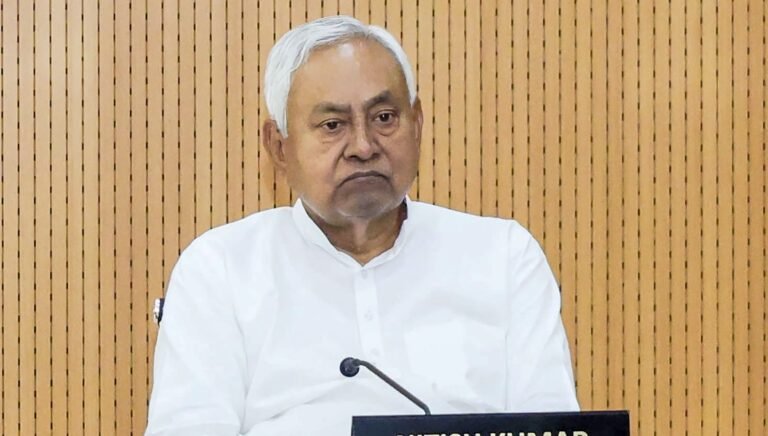
India is experiencing a drastic change in the stock market. The headline figures are also dramatic: foreign investments have withdrawn $2.3 billion out of Indian equity funds since July, and a net outflow of more than 138 lakh crore (approximately 15.46 billion to 16.6 billion) of foreign investment during the year till September 2025. This departure, in which monthly withdrawals have been increasing, indicates that in the meantime, the India Story is losing some of its luster among the funds of the world.
For advertisement on our platform, do call at +91 6377460764 or email us at contact@thephilox.com.
The trend has raised eyes of many particularly considering the past role of Foreign Institutional Investors (FIIs) in Sensex and Nifty. In this article, the causes of the exodus, how this has directly impacted the market and why domestic investors are so important in stopping a large market crash are broken down.
The Focal Reason: The Valuation dilemma in India.
Valuation is the single largest influence that is causing foreign investors to run away. In simple terms, Indian stocks are deemed to be expensive as compared to other emerging markets.
High Prices, Slower Profits
- The Price Tag: The Price to Earnings (P/E) ratio of India benchmark Nifty 50 index has been trading at a high value as compared to the long-term average. Value seekers such as Foreign Portfolio Investors (FPIs) are realizing that they are paying an extremely high price to obtain a share of the future growth of India.
- Lure of the other side: Conversely, markets in other countries such as China, Taiwan and South Korea have fallen so much cheaper after their respective market corrections. Global funds managers are moving funds into these cheaper markets, particularly with China rolling out new economic stimulus initiatives and technology-focused market economies such as Taiwan and South Korea benefiting through the global technology tailwinds. To a global fund with a significant size, it is a typical profit-taking move to sell an expensive (India) asset to purchase a cheaper (other emerging markets) asset.
- Earnings Disappointment: The growth of earnings of companies in the past quarters has been lower over the past years than anticipated by India. Foreign investors become impatient when the valuations are high and the corporate profits fail to increase at a high rate to support the valuation.
International Political Unrest and American Intervention.
The flows of foreign investors are not only to India, but also strongly depend on world processes and policies.
The US-India Trade Tangle
Another major recent development that has led to uncertainty is the increasing trade tension between the US and India. Investor sentiment has been dimmed by the announcement of high US tariffs on some of the Indian exports, up to 50 percent in some cases. The worry of global investors is that such trade wars might harm the growth of exports made by India and may adversely affect the profitability of Indian firms with international business connections. This uncertainty by itself is sufficient that many risk-averse funds will cut their exposure to India.
The Magnetic Pull of US Bonds
As the US economy is thriving and the US Federal Reserve suggests increasing or maintaining interest rates, the yield (return) on US government bonds, referred to as US Treasuries, increases. These bonds are ranked amongst some of the safest investments in the world. As the yields on this safest alternative increase, the international investors will tend to withdraw funds form risky investments such as emerging market stocks (including India) and back to the US bonds. This is a universal global risk-off-sentiment, which is being experienced by all emerging markets, and India is not an exception.
The Impact: What the Market is Doing.
The Indian markets have been affected evidently, but with limited impact, by the outflow of billions of dollars.
- Market Volatility: The selling has increased day to day ups and downs of the market. There has been a downward pressure on stocks, particularly in industries wherein the FIIs have high shares such as IT and large cap Financials.
- Currency Weakness: FIIs can sell Indian stocks and exchange their Rupees to US Dollars which they send home. The high demand of the Dollar has led to the weakening of the Indian Rupee (INR) against the US Dollar making imports more expensive.
- Mid and Small-Cap Correction: Smaller and mid-sized firms have been hit more than the large and well established firms. Both the mid-cap and small-cap stock indices have sunk considerably off their heights since these areas are frequently sold first in a foreign exodus.
The Resilience: India Domestic Firepower.
The Indian stock market has been very resilient despite the massive foreign selling. The Domestic Institutional Investors (DIIs) have made this stability a new characteristic in the Indian market.
The “DII Shield”
- Continuous Buying: The DIIs, comprised of Indian Mutual Funds, Insurance companies, and Pension Funds, have increased their buying of practically all of the shares sold by the FIIs. Indeed, DIIs have purchased over four times the net FPI outflow 2025.
- The Might of the SIP: This retail buying is mass-financed through the rising popularity of the Systematic Investment Plans (SIPs) of millions of small Indian retail investors. The Indian retail investors are investing now at a monthly rate irrespective of the market movements. Such disciplined movement of domestic money resembles an enormous safety net that helps to avoid the collapse of the market in case of foreign investors sell.
- The New market Foundation: DIIs currently own a moderate share of Indian equities compared to the one owned by FIIs. This paradigm transformation implies that the Indian market is no longer entirely reliant on foreign capital thus becoming stronger and stable amid global shocks.
Looking Forward: Will Foreigners come back?
Although the short-term prospects are still pessimistic, majority of analysts feel that the long-term fundamentals of the Indian economy cannot be overlooked.
The Long-Term Drivers:
- Good Economic Growth: India remains one of the most rapidly expanding major economies in the world, being driven by intense domestic consumption (a vast domestic market) and state-initiated infrastructure investment.
- Policy Boosts: The government is working on reforms such as the Production-Linked Incentive (PLI) schemes, which is turning India into a more tempting manufacturing location (the “China+1” strategy).
- Good Entrance: There are already good entrances such as HSBC which are already turning positive with the argument that the recent sell-off has made Indian stocks cheaper. They forecast that by the second half of 2025, FIIs are likely to start coming back, particularly assuming US interest rates peak or start declining, a move that would refocus global liquidity to the emerging markets.
Investor Takeaway
To the average investor, the present FII exit is a time of instability and not a disaster. Foreign capital is usually tactical and short-term. A strong Indian growth story with the support of the robust domestic investor base implies that it is the market correction through foreign selling, which is an opportunity to purchase high-quality companies at a more affordable price by long-term investors. A Headline of $4 Billion Projected Outflow by Dec 2025 is a frightening one however, the true picture is the emergence of the domestic investor, who is gradually taking over the steering wheel of the Indian market.






